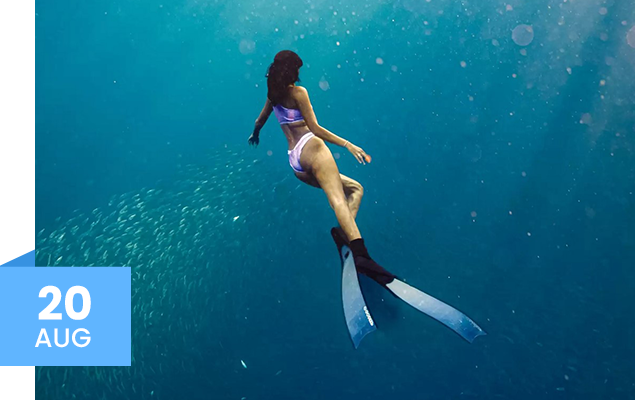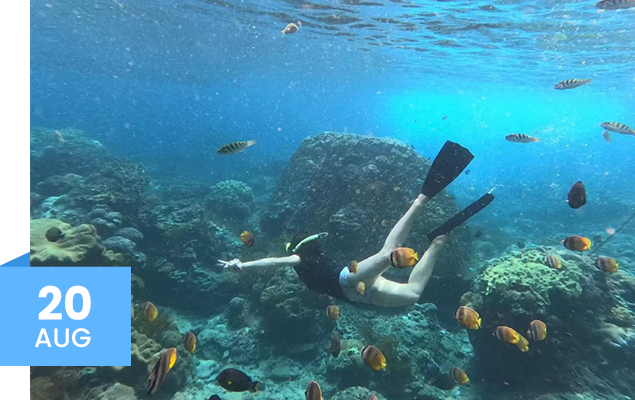The Best Snorkeling Spots in Nusa Penida – What You Need to Know
Nusa Penida, a small island southeast of Bali, has quickly become one of Indonesia’s top destinations for ocean lovers. While it’s well known for its dramatic cliffs and photogenic viewpoints, the real magic lies beneath the surface. Snorkeling in Nusa Penida offers some of the richest marine biodiversity in Southeast Asia—with coral gardens, sea turtles, tropical reef fish, and the chance to swim with majestic manta rays.
But not all snorkeling spots are the same. In this article, we’ll take you on a detailed journey through the best snorkeling spots in Nusa Penida, complete with local insights, tips for each location, and everything you need to know before diving in.
1. Manta Point – The Iconic Giant Encounter
If there’s one spot that puts Nusa Penida on the global snorkeling map, it’s Manta Point. This is where snorkelers come hoping to swim alongside the enormous—but gentle—manta rays that frequent the area.
What to Expect:
Located on the southwest side of the island, Manta Point features deeper waters and rocky underwater cliffs. The visibility is usually moderate, but the excitement of seeing 2 to 5-meter-wide manta rays gracefully circling the cleaning stations makes it a once-in-a-lifetime experience.
Best For:
Confident snorkelers who don’t mind waves or deeper water. Guided trips are essential due to the currents.
Tips:
-
Manta rays are wild animals, so sightings are not 100% guaranteed, but chances are high during dry season (April–October).
-
Always follow ethical snorkeling: keep a respectful distance and avoid chasing the manta rays.
2. Manta Bay – A Calmer Alternative
Not to be confused with Manta Point, Manta Bay lies closer to the coast and offers calmer waters, making it more beginner-friendly.
What to Expect:
Though smaller than Manta Point, Manta Bay is still a hotspot for manta sightings. The visibility can vary, but on a good day, you can see mantas swooping through shallow blue waters—an ideal backdrop for underwater photography.
Best For:
Families, beginners, or those who want a shorter trip without traveling too far offshore.
Tips:
-
Morning trips often offer better visibility.
-
Combine this spot with Crystal Bay or Gamat Bay for a well-rounded snorkeling experience.
3. Crystal Bay – The Postcard Reef
As the name suggests, Crystal Bay is known for its crystal-clear water and stunning coral life. It’s one of the most accessible snorkeling spots and often the first stop on many snorkeling trips.
What to Expect:
Calm, protected waters with excellent visibility and vibrant coral gardens. You’ll likely see butterflyfish, parrotfish, clownfish (yes, Nemo lives here), and even sea turtles if you’re lucky.
Best For:
All levels of snorkelers. Great for relaxing snorkeling and underwater photography.
Tips:
-
Avoid afternoons during high tide—it can get crowded with boats and swimmers.
-
Be mindful of the current as you get further from the shore; always stay near your guide or boat.
4. Gamat Bay – Nusa Penida’s Hidden Gem
Tucked between cliffs on the northwest coast, Gamat Bay is a relatively untouched snorkeling spot that feels like a secret lagoon.
What to Expect:
Healthy coral reefs, fewer tourists, and a high chance of seeing larger marine life like moray eels, sea turtles, and occasionally reef sharks.
Best For:
Intermediate snorkelers or those seeking something less commercial. This spot is also popular with divers.
Tips:
-
Currents can be strong, so always go with a guide.
-
Great to combine with Manta Bay or Wall Point in a half-day tour.
5. Wall Point – A Vertical Reef Paradise
Wall Point is often overlooked, but it’s one of the most unique snorkeling locations on the island due to its vertical coral wall, which drops steeply into the sea.
What to Expect:
Imagine floating beside a massive wall of coral teeming with fish and colorful marine life. It’s like flying alongside an underwater cliff. You’ll see fusiliers, angelfish, and schools of tiny glittering fish.
Best For:
Snorkelers who want something visually different and love the feeling of depth below.
Tips:
-
This is a great spot for GoPro footage. Bring or rent a waterproof camera!
-
Let your guide know if you’re not comfortable with deeper water—the wall may appear intimidating, but you can stay in the upper part safely.
When Is the Best Time to Snorkel in Nusa Penida?
-
Dry Season (April–October): Best visibility, calm seas, more manta sightings
-
Rainy Season (November–March): Fewer crowds, but choppier waters and lower visibility
-
Morning Trips: Generally offer better conditions, calmer water, and clearer views
At Penida Heaven Snorkling, we help you schedule the best time based on tides, current reports, and your goals.
Why Go with a Local Snorkeling Operator?
Snorkeling in Nusa Penida may look effortless, but navigating ocean currents, safety, and marine conditions takes experience. That’s why going with a local operator like Penida Heaven Snorkling ensures:
- Professional, bilingual guides
- Flexible private and shared trips
- Full equipment (life jackets, snorkels, fins)
- GoPro footage
- Life insurance and safety briefings
- Insider knowledge on which spots are best for the day
Plus, we genuinely care about marine conservation and sustainable tourism. We don’t touch or chase marine life, and we educate our guests about ethical snorkeling behavior.
Essential Snorkeling Tips Before You Go
- Use reef-safe sunscreen to protect marine ecosystems
- Stay close to your guide or group, especially in current-heavy areas
- Don’t touch the coral or marine animals—they’re fragile and protected
- Bring a dry bag for phones, wallets, and personal items
- Hydrate and eat light before the trip—it helps with seasickness
Final Thoughts
Snorkeling in Nusa Penida is not just another tourist activity—it’s an adventure that connects you with one of the most beautiful underwater ecosystems in the world. Whether you’re hoping to spot manta rays or simply float over rainbow-colored corals, there’s a snorkeling spot in Nusa Penida for everyone.
Let Penida Heaven Snorkling be your guide to these unforgettable places. We don’t just take you to the sites—we help you experience the sea in the safest, most respectful, and most memorable way possible.




